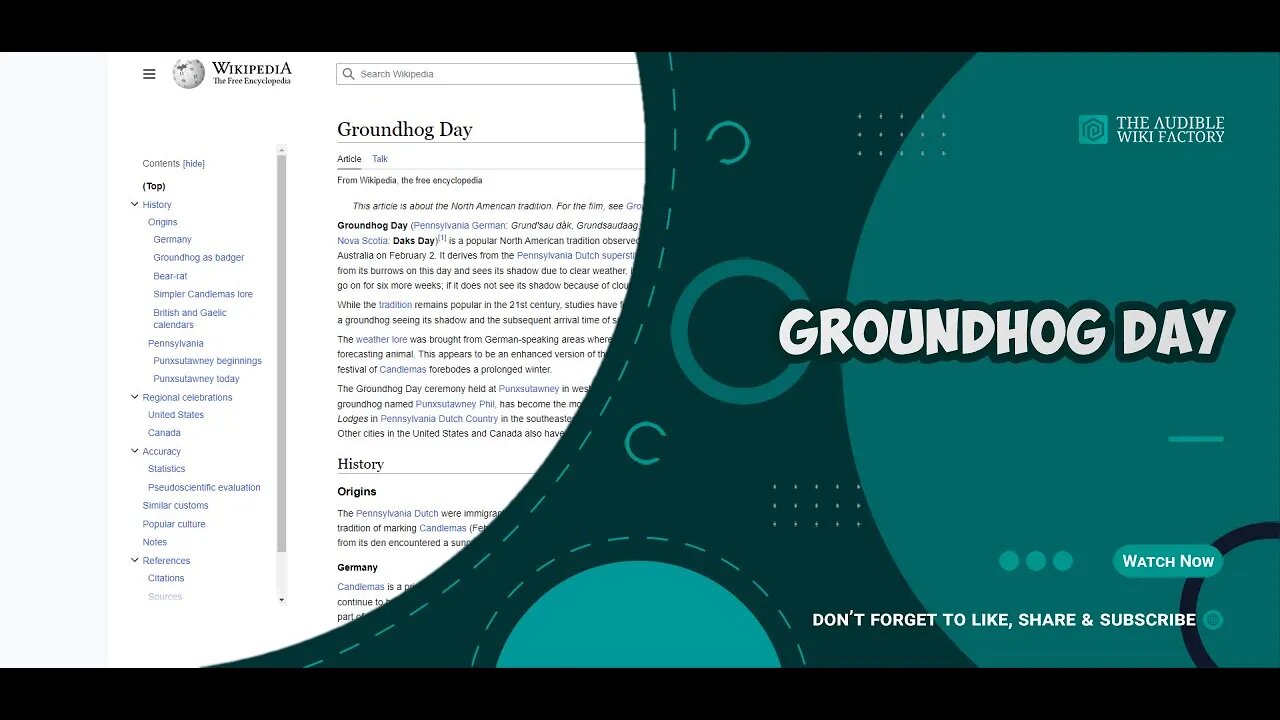Premium Only Content

Groundhog Day is a popular North American tradition observed in the United States, Canada, and
Groundhog Day is a popular North American tradition observed in the United States, Canada, and Australia on February 2. It derives from the Pennsylvania Dutch superstition that if a groundhog emerges from its burrows on this day and sees its shadow due to clear weather, it will retreat to its den and winter will go on for six more weeks; if it does not see its shadow because of cloudiness, spring will arrive early.
While the tradition remains popular in the 21st century, studies have found no consistent association between a groundhog seeing its shadow and the subsequent arrival time of spring-like weather.
The weather lore was brought from German-speaking areas where the badger (German: Dachs) is the forecasting animal. This appears to be an enhanced version of the lore that clear weather on the Christian festival of Candlemas forebodes a prolonged winter.
The Groundhog Day ceremony held at Punxsutawney in western Pennsylvania, centering on a semi-mythical groundhog named Punxsutawney Phil, has become the most frequently attended ceremony. Grundsow Lodges in Pennsylvania Dutch Country in the southeastern part of the state observe the occasion as well. Other cities in the United States and Canada also have adopted the event.
ORIGINS
The Pennsylvania Dutch were immigrants from German-speaking areas of Europe. The Germans had a tradition of marking Candlemas (February 2) as "Badger Day" (Dachstag), on which if a badger emerging from its den encountered a sunny day, thereby casting a shadow, it presaged four more weeks of winter.
LINK TO ARTICLE: http://en.wikipedia.org/wiki/Groundhog_Day
TAGS: Groundhog Day, Weather lore, Superstitions, Pennsylvania German culture, Pennsylvania culture, Public holidays in the United States, Public holidays in Canada, February observances, Groundhog Day
#GeneralKnowledge #AudibleWikiFactory #Audible #Wikipedia #GroundhogDay
-
 34:34
34:34
The Audible Wiki Factory
1 year agoSaint Patrick's Day, or the Feast of Saint Patrick, is a religious and cultural holiday held on
778 -
 14:20
14:20
Timcast
1 hour agoTim Pool HAS JOINED Rumble Premium, HUGE ANNOUNCEMENT, Timcast Exclusive Content Is MOVING
3.24K93 -
 LIVE
LIVE
Candace Show Podcast
4 hours agoBecoming Brigitte: Jean-Michel Trogneux | Ep 4
8,454 watching -
 1:23:59
1:23:59
Redacted News
1 hour agoBREAKING! CORRUPT FBI CAUGHT HELPING ILLEGALS AVOID ICE ARRESTS, HOMAN READY TO PROSECUTE | Redacted
21.4K55 -
 1:18:39
1:18:39
Awaken With JP
1 day agoThe Latest in the Resurrection of America - LIES Ep 78
62.1K15 -
 LIVE
LIVE
Revenge of the Cis
3 hours agoEpisode 1445: Too Much Breakfest Club
1,826 watching -
 LIVE
LIVE
Game On!
3 hours agoPUMP THE BRAKES! It's college basketball season now!
103 watching -
 LIVE
LIVE
John Crump Live
17 hours agoLawyer Talk Ft. AOR (Backed Out) & Fudd Busters
366 watching -
 55:12
55:12
Benny Johnson
2 hours agoCongress Makes BOMBSHELL Announcement LIVE Now on Epstein List, JFK, UFOS | 'All Will Be REVEALED!'
63.2K82 -
 1:01:58
1:01:58
In The Litter Box w/ Jewels & Catturd
1 day ago30 Wasted Hours | In the Litter Box w/ Jewels & Catturd – Ep. 739 – 2/11/2025
35.1K25